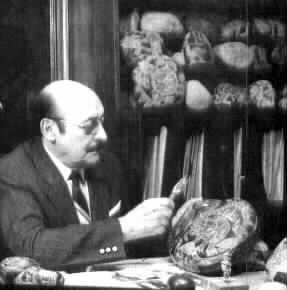The Ica Stones – Fact or Fake
 In the forty years that have elapsed since these stones first came to the attention of Dr. Cabrera, they have aroused fierce controversy. It would be fair to say that most archeologists and scientists trained within the accepted paradigm of history are convinced that these stones are fakes. They remain convinced that they were carved by local Indians as a means of generating income by selling them to gullible tourists as ancient artifacts.
In the forty years that have elapsed since these stones first came to the attention of Dr. Cabrera, they have aroused fierce controversy. It would be fair to say that most archeologists and scientists trained within the accepted paradigm of history are convinced that these stones are fakes. They remain convinced that they were carved by local Indians as a means of generating income by selling them to gullible tourists as ancient artifacts.
Dr. Cabrera initially shared this view, particularly when the local farmer who had supplied him with the stones admitted that he had carved these pieces himself. When the Peruvian authorities became concerned that a thriving industry might develop in which genuine Peruvian antiquities might be lost, they arrested the man. Fearing that he might be imprisoned for theft under the Antiquities Act, he quickly confessed.
The fact that an illiterate peasant had confessed to having single-handedly carved some 15,000 stones without the knowledge of any of his fellow villagers, clearly did not trouble the Peruvian authorities. They merely accepted his word and released him. Yet had this man been responsible for carving the images himself, the task would have taken him over 40 years, assuming that he was able to complete one stone a day, every day without a break.
Dr. Cabrera never publicly divulged the true source of these stones, other than to say that they were discovered underground in a small area close to the village of Ocucaje. It was clear that other people besides Cabrera had discovered the source of the stones, as visitors to Ocucaje found that almost every villager had a collection of carved stones which lay scattered around their houses.
Until his death in December 30th, 2001, Dr. Cabrera sought to get official recognition of the importance of his collection of stones. After his death, the control of his collection was taken over by his daughter Eugenia, who is now the Director of the Ica Stones Association.
Unfortunately, this collection was imperiled by the huge earthquake which devastated a large part of Southern Peru on August 15, 2007, destroying some 58,000 homes in the region.
The walls of the museum suffered large fissures causing shelves to collapse, damaging many stones. Until a new building can be found to house this collection, it has been moved to a nearby warehouse for safekeeping.




